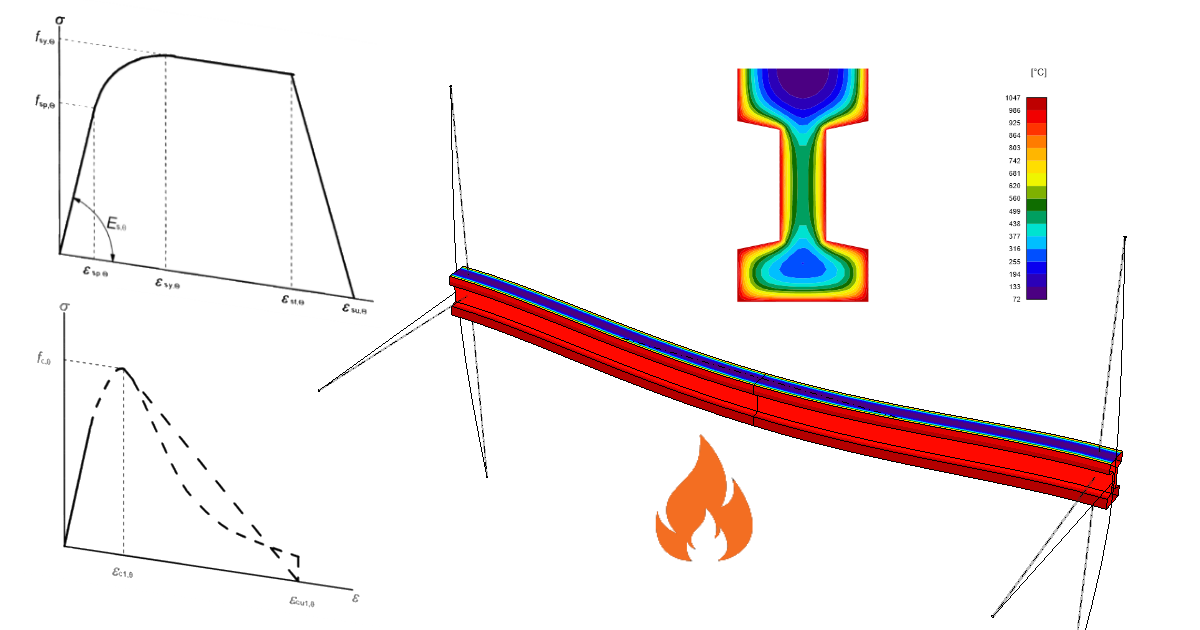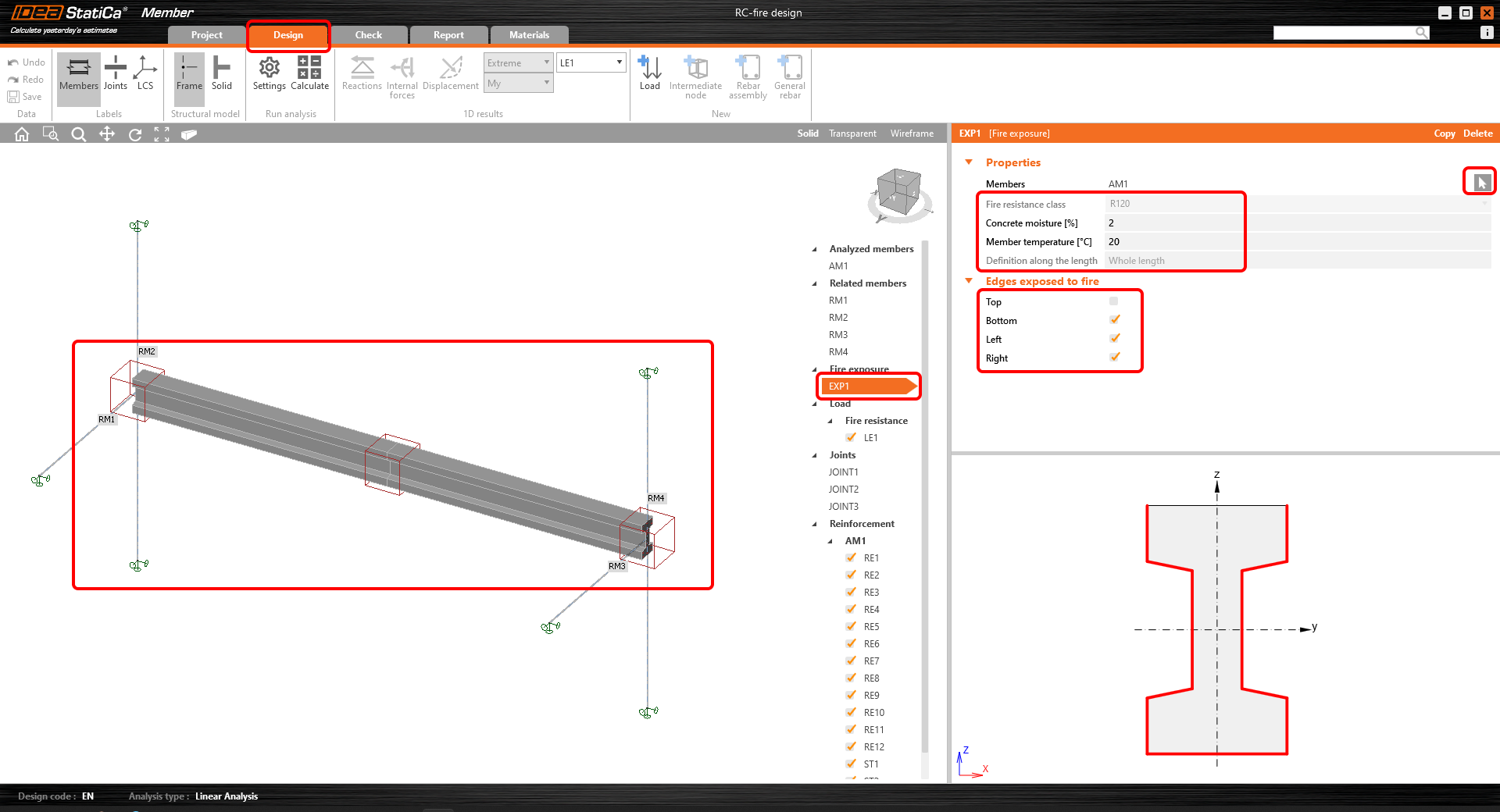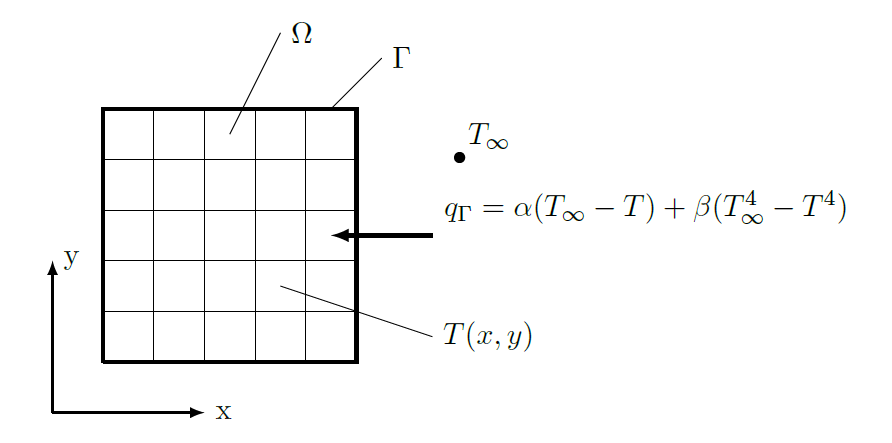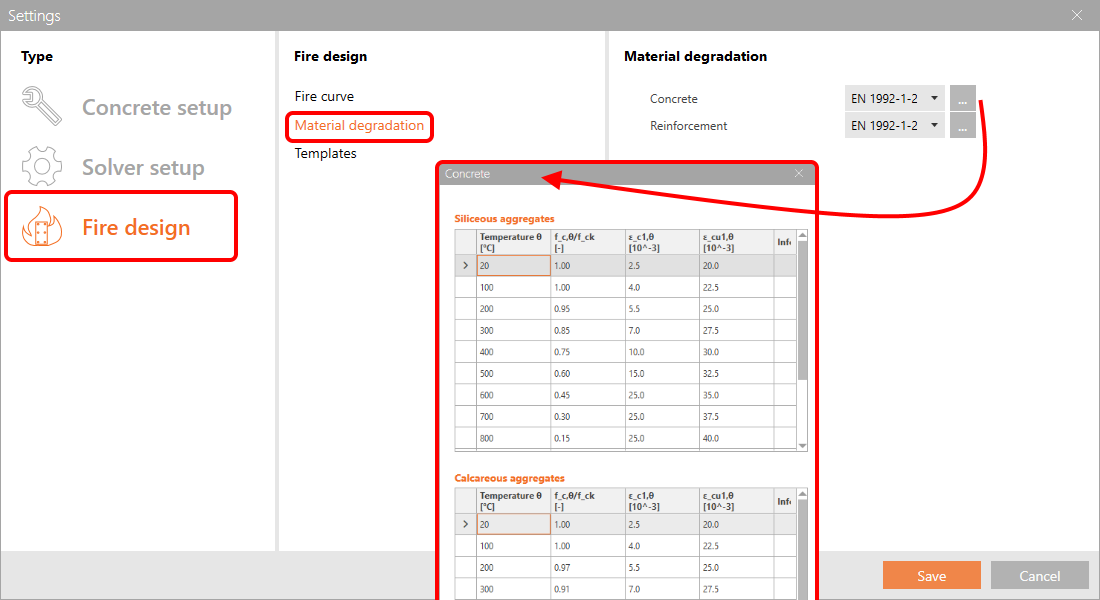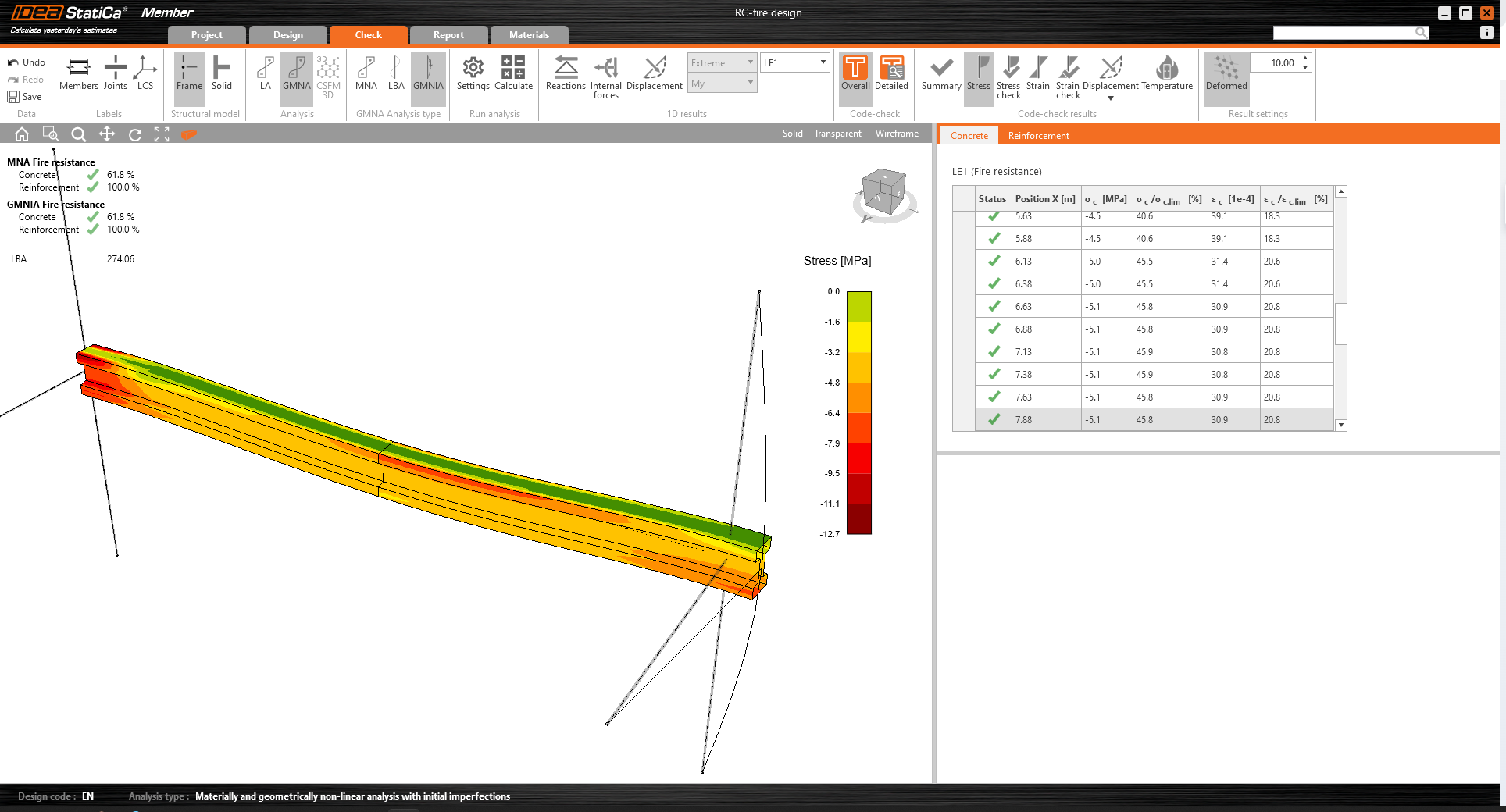Thermal analysis of concrete structures
What methods are used when assessing the structural fire performance for beams and columns? You can choose among several design procedures according to EN 1992-1-2:
- Tabulated data - available in application IDEA StatiCa RCS since version 10.1
- Simplified calculation methods - 500°C isotherm method, Zone method
- Advanced calculation methods
This time we skipped the other simplified methods and we were determined to develop the most advanced calculation method you can use. And that is the thermal analysis (TA). Even though you find the most advanced analysis in IDEA StatiCa apps the workflows are kept as easy as possible. So, designing and checking of concrete structures for fire resistance is very easy again.
Fire performance of reinforced concrete beams and columns in a few steps
Geometry
Analyzed member(s) can be beams, columns, or frames of any shape of cross-sections.
Fire inputs and loads
If you want to run a thermal analysis you need to set the fire exposure data first. Fire resistance class, concrete moisture, member temperature, and what parts, and edges of the analyzed member are exposed to the fire.
Thermal analysis
Thermal analysis is based on performing a non-stationary heat transfer over a cross-section (temperature varies in time). Regarding the material properties of concrete and reinforcement and temperature range, this method is non-linear. The initial condition is the temperature of the environment in time according to Eurocode 1991-1-2.
Similarly, like Geometrically and materially non-linear analysis (GMNA), implemented in IDEA StatiCa Member, the analyzed member is divided into sections that are meshed to finite elements within the heat transfer is calculated.
The output of the thermal analysis is a temperature field within the cross-section at the time indicated by the fire resistance class (R 60, e.g.). Such a distribution of the temperature within the cross-section is used to determine the material properties of concrete and reinforcement and thermal strain. The material degradation respects tables stated in the Eurocode EN 1992-1-2 or can be defined by the user and saved in the templates.
You can look at the distribution of the temperature in overall or detailed views.
Geometrically and materially non-linear analysis
After performing the thermal analysis (TA), geometrically and materially non-linear analysis (GMNA) is automatically started using the outputs of thermal analysis as the initial state of the analyzed member. The results of the GMNA are stresses and strains which are compared to the limit (degraded) values.
Stress values in concrete in compression (concrete in tension is excluded).
Stress values in reinforcement
Available in both Expert and Enhanced editions of IDEA StatiCa Concrete and Prestressing.


